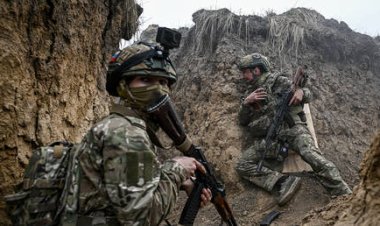Biden will visit Florida over the weekend to survey Hurricane Idalia damage
His visit will come several days after Idalia swept through Florida and several other southern states, causing widespread damage and flooding to coastal areas.


President Joe Biden said he’ll travel to Florida Saturday to survey damage from Hurricane Idalia, though he did not announce his exact location.
His visit will come several days after Idalia swept through Florida and several other southern states, causing widespread damage and flooding to coastal areas.
Biden on Thursday also said he spoke to Florida Gov. Ron DeSantis, a 2024 presidential hopeful, who may compete with the president for the White House if he becomes the 2024 GOP nominee.
“This morning, I spoke again — it seems like we should be on direct dial, the two of us — Governor DeSantis and I, we spoke again this morning and I let him know that I approved his major disaster declaration,” Biden said while addressing FEMA workers.
Hurricane Idalia made landfall in the Big Bend area Wednesday morning with 125 mph winds and coastal flooding of up to 15 feet. The storm then moved north to Georgia around noon after striking mostly rural and poor stretches of the state. DeSantis toured some of those areas on Thursday with Federal Emergency Management Agency Administrator Deanne Criswell. FEMA is now reviewing the state’s expanded emergency declaration, which will open up federal funding that will pay for critical work such as debris removal and labor costs tied to emergency response efforts.
“We are going to make sure that we always have the resources here from the federal family to support the current efforts but also the ongoing recovery efforts that may be needed in these communities that were impacted by Hurricane Idalia,” Criswell said Thursday.
Gov. Ron DeSantis on Thursday said Florida was still digging out from the wreckage left by Hurricane Idalia, with more than 140,000 still without power and roads blocked in parts of the Big Bend region. DeSantis said during a news conference in Steinhatchee, not far from where Hurricane Idalia made landfall, that a traffic fatality in Alachua County was the first death to officially be tied to the storm. According to the Florida Highway Patrol, a 59-year-old man was killed when the vehicle he was driving veered off a road in rainy weather and hit a ditch.
But the governor told reporters at the Florida Emergency Operations Center in Tallahassee that the damage unleashed by Idalia as it made landfall in Taylor County as a powerful Category 3 storm could have been much worse. The state National Guard and a consortium of other search teams rescued 40 people trapped among the wreckage last night and state authorities still haven’t officially tied a handful of deaths yesterday to the storm.
“When they lose their church, when they lose their home, when they lose their business — this was really the first impact,” DeSantis said. “This is the first thing people saw this morning.”
DeSantis said it seemed that most people heeded evacuation calls, and the state benefited from Idalia staying largely along the track predicted by storm forecasters. That’s in stark contrast to last year’s devastating Hurricane Ian, which caused more than 140 deaths, left more than a million people without power and veered unpredictably.
“It should be said that this was a pretty strong forecast,” DeSantis said. “If you look back to where we were over the weekend and it was a Big Bend impact, there was a little variation but the bottom line is that the forecasts were doggone accurate.”
President Joe Biden on Thursday also called DeSantis to tell the governor that he signed a major disaster declaration and ordered all available federal resources to help with the state’s storm response.
Hurricane Idalia made landfall in the Big Bend area Wednesday morning with 125 mph winds and coastal flooding of up to 15 feet. The storm then moved north to Georgia around noon after striking mostly rural and poor stretches of the state. DeSantis will tour some of those areas on Thursday with Federal Emergency Management Agency Administrator Deanne Criswell. FEMA is now reviewing the state’s expanded emergency declaration, which will open up federal funding that will pay for critical work such as debris removal and labor costs tied to emergency response efforts.
“We are going to make sure that we always have the resources here from the federal family to support the current efforts but also the ongoing recovery efforts that may be needed in these communities that were impacted by Hurricane Idalia,” Criswell said.
DeSantis and Criswell will be visiting areas such as Cedar Key and Steinhatchee, which were left impassable throughout Wednesday due to roadways that were blocked by debris. Roughly 40,000 power utility crews also are working in damaged parts of the state to restore power to an estimated 139,000 customers.
Rescuers have already combed the state’s coastline for people left stranded by the storm, and they will conduct more detailed searches on Thursday. Florida Division of Emergency Management Executive Director Kevin Guthrie said Thursday that state officials now will begin assessing the damage to come up with plans and calculate the costs of cleaning everything up.
The state is still in talks with FEMA about the ratio of costs that will be covered by federal dollars. Usually FEMA will cover 75 percent of disaster recovery costs, but Florida officials are talking with their federal counterparts about covering all of the most critical costs that arise in the immediate aftermath of the storm.
The debris left by Idalia was immense, with thousands of trees snapped like toothpicks. DeSantis said he saw debris everywhere during a tour on Wednesday.
“There were branches and all kinds of stuff everywhere,” DeSantis said. “I saw roofs torn off of buildings.”












